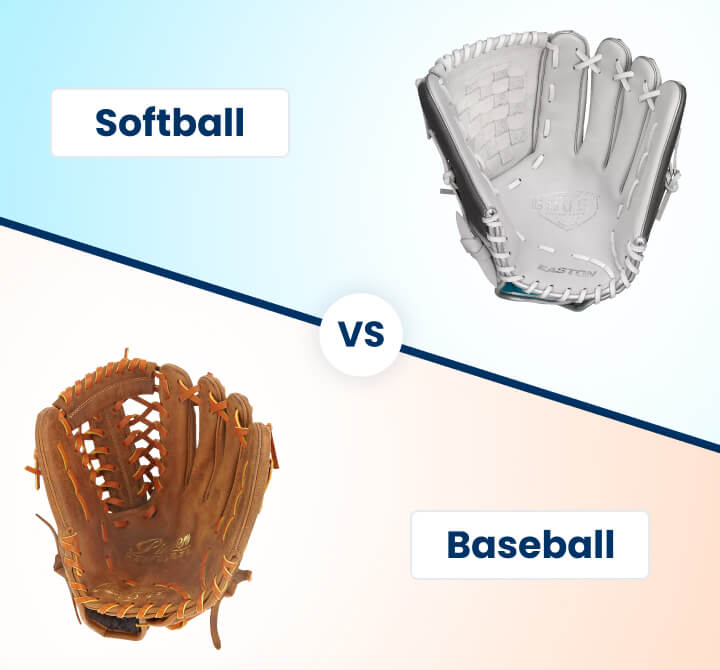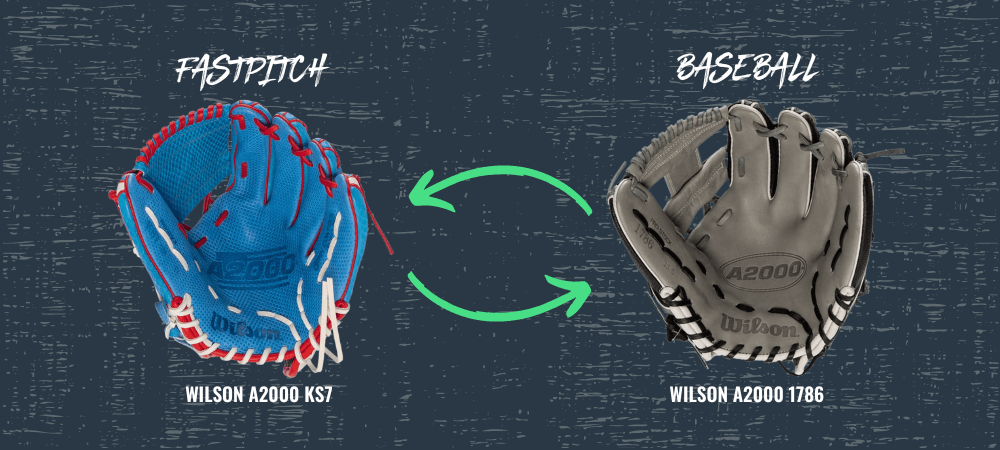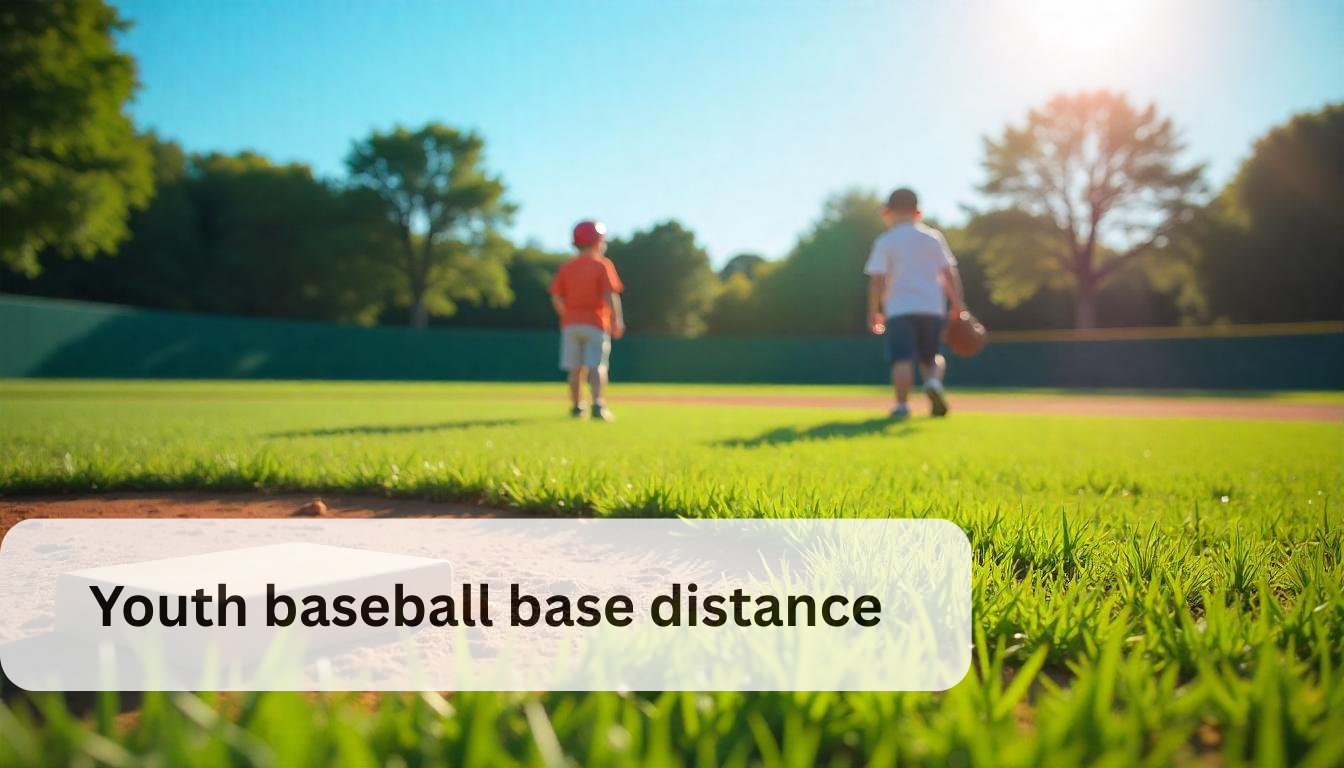Softball and baseball gloves may look similar at first glance. However, they have distinct differences that affect performance.
Understanding these differences is crucial for players of both sports. Choosing the right glove can impact your game significantly. Softball gloves are designed to handle the larger ball, while baseball gloves are tailored for the smaller, harder baseball. The differences in size, shape, and pocket depth can influence how well you play.
This comparison will help you understand the key features of each type of glove. Whether you are a beginner or an experienced player, knowing what sets these gloves apart is essential for making an informed choice. Let’s explore the unique characteristics of softball and baseball gloves to help you find the perfect fit for your game.

Credit: www.academy.com
Introduction To Gloves
Gloves play a crucial role in both softball and baseball. They are not just accessories; they are essential gear. Whether you are catching, fielding, or throwing, the right glove makes a significant difference.
Purpose Of Gloves
Gloves protect players’ hands from fast-moving balls. They also help in catching and fielding. The webbing and padding of the glove provide a secure catch. A well-fitted glove enhances performance and confidence on the field.
Brief History
The use of gloves in baseball dates back to the 1870s. Early players used their bare hands, which led to injuries. The first gloves were simple leather pieces. Over time, they evolved into more complex designs. Softball gloves appeared later, adapting to the game’s specific needs.
Today, both baseball and softball gloves come in various styles. They are designed to improve grip, comfort, and control. The evolution of gloves continues, driven by technology and player feedback.
Materials Used
Choosing the right glove is crucial for both softball and baseball. The materials used in gloves impact comfort, durability, and performance. Here, we explore the main types of materials used in softball and baseball gloves.
Leather Types
Leather is the most common material for both types of gloves. It provides excellent durability and a comfortable fit. There are different types of leather used in gloves:
- Full-grain leather: This is the highest quality leather. It offers maximum durability and a long break-in period.
- Top-grain leather: Slightly less durable than full-grain, but more pliable. It has a shorter break-in period.
- Premium steerhide: Common in high-end gloves. Very durable and provides a good balance between flexibility and toughness.
- Buffalo and cowhide: Found in mid-range gloves. They offer good durability but may require more break-in time.
Synthetic Options
Synthetic materials are often used in entry-level gloves. They are lighter and cheaper but may lack the durability of leather. Here are some common synthetic materials:
- Vinyl: Common in youth gloves. Lightweight and easy to break in, but less durable.
- Microfiber: Offers better durability than vinyl. Lightweight and easy to maintain.
- Composite materials: Made of various fibers and resins. They provide a balance between weight and durability.
Choosing the right material depends on your needs, whether it’s durability, weight, or ease of break-in. Understanding the materials used can help you make an informed decision.
Size Differences
Understanding the size differences between softball and baseball gloves is crucial. These differences can impact your game. This section will delve into the specifics of each glove size, helping you choose the right one for your needs.
Softball Glove Size
Softball gloves are generally larger than baseball gloves. This is due to the larger size of the softball itself. The pocket is also deeper, allowing for better ball control.
| Position | Size Range (in inches) |
|---|---|
| Infield | 11.5 – 12.5 |
| Outfield | 12 – 14 |
| Pitcher | 12 – 13 |
Infield gloves are smaller for quick ball transfers. Outfield gloves are larger to help catch fly balls.
Baseball Glove Size
Baseball gloves are smaller compared to softball gloves. This is due to the smaller size of the baseball. Each position has a specific glove size to optimize performance.
| Position | Size Range (in inches) |
|---|---|
| Infield | 11 – 12 |
| Outfield | 12 – 13 |
| Pitcher | 11.5 – 12.5 |
Infield gloves are smaller for rapid ball handling. Outfield gloves are slightly larger for catching.
Webbing Styles
When choosing between a softball glove and a baseball glove, understanding webbing styles is crucial. The webbing connects the thumb and fingers of the glove. It helps players catch and secure the ball. There are different webbing styles for softball and baseball gloves. Each style offers unique benefits for various positions and player preferences.
Common Webbing Types
Both softball and baseball gloves feature a variety of webbing styles. Here are the most common types:
- Closed Web: Ideal for pitchers. It hides the ball from the batter.
- Open Web: Great for infielders. It allows dirt to fall through the glove.
- H-Web: Popular among outfielders. Provides a balanced mix of visibility and stability.
- Trapeze Web: Offers maximum flexibility. Often used by outfielders for catching fly balls.
- Modified Trap: A combination of the trapeze and closed web. Suitable for multiple positions.
Sport-specific Webbing
Softball and baseball gloves have different requirements. The ball size and game dynamics influence the webbing style.
| Sport | Webbing Style | Benefits |
|---|---|---|
| Softball | Closed Web | Securely catches larger balls |
| Softball | H-Web | Provides flexibility and visibility |
| Baseball | Open Web | Allows quick ball release |
| Baseball | Trapeze Web | Great for catching fly balls |
Choosing the right webbing style depends on your position and personal preference. Consider the benefits of each type. Make an informed decision for your game.
Pocket Depth
When choosing between a softball glove and a baseball glove, pocket depth is a key factor. Pocket depth affects how the ball is caught and held. It is important for both players and the game.
Softball Pocket Depth
Softball gloves have deeper pockets. This helps catch the larger softball. The deeper pocket also helps in securing the ball. It prevents it from popping out. Softball gloves often have larger webs. This increases the catching area.
Baseball Pocket Depth
Baseball gloves have shallower pockets. They are designed for the smaller baseball. The shallower pocket allows for quicker ball transfers. This is crucial for infielders who need to throw quickly. Outfielders also benefit. The shallow pocket helps in fast catches and throws.
| Feature | Softball Glove | Baseball Glove |
|---|---|---|
| Pocket Depth | Deeper | Shallower |
| Ball Size | Larger | Smaller |
| Web Size | Larger | Smaller |
Choosing the right pocket depth can improve your game. Whether you play softball or baseball, the right glove matters. Pay attention to pocket depth. It can make a big difference.

Credit: www.youtube.com
Position-specific Gloves
Choosing the right glove is crucial in softball and baseball. Each position on the field demands a specific type of glove. Knowing the differences helps players perform better.
Infield Gloves
Infield gloves are usually smaller and lighter. This helps players make quick plays. The shorter length allows for faster ball transfer. The pocket is shallow for easy retrieval. In softball, these gloves might be slightly larger due to the bigger ball.
Infield gloves often have an open web design. This helps with visibility and control. Baseball infielders prefer gloves around 11 to 12 inches. Softball infielders might use gloves up to 13 inches.
Outfield Gloves
Outfield gloves are larger with deeper pockets. This design helps catch fly balls and line drives. The larger size provides more reach and coverage. In baseball, these gloves are typically 12 to 13 inches long.
Softball outfield gloves range from 12.5 to 14 inches. The closed web design is common in outfield gloves. This helps secure the ball better. The extra length and pocket depth make these gloves ideal for outfielders.
Break-in Process
The break-in process is crucial for both softball and baseball gloves. A well-broken-in glove ensures better performance and comfort. Though the end goal is the same, the methods and duration can vary between these two types of gloves.
Softball Glove Break-in
Softball gloves often have a larger pocket. This requires more effort and time to break in. Start by applying a small amount of glove conditioner. Work it into the leather to soften it. Next, use a mallet to pound the pocket and fingers. This helps shape the glove. Wrap the glove with a ball inside it. Secure it with rubber bands or string. Let it sit for a day. Repeat this process several times. Play catch frequently. The more you use the glove, the better it will break in.
Baseball Glove Break-in
Baseball gloves usually have a smaller pocket. This makes the break-in process slightly quicker. Use glove conditioner sparingly. Work it into the leather. Focus on the pocket and fingers. Use a mallet to pound the glove. This helps loosen the leather. Place a baseball in the pocket. Wrap the glove tightly with rubber bands. Leave it for a day. Repeat the process as needed. Play catch often. Regular use helps the glove mold to your hand.
Popular Brands
When choosing between a softball glove and a baseball glove, it’s essential to know the top brands. Leading manufacturers design gloves with unique features for each sport. This helps players perform better on the field. Below, we explore some of the most popular brands for both softball and baseball gloves.
Leading Softball Glove Brands
Softball gloves come from many well-known brands. Each offers different benefits. Here are some of the top names:
- Wilson: Known for high-quality materials and durability. Wilson gloves are a favorite among professional players.
- Rawlings: Offers a range of gloves for all levels. Their gloves are known for comfort and fit.
- Mizuno: Features innovative designs and technology. Mizuno gloves provide excellent performance and reliability.
- Easton: Known for lightweight and flexible gloves. Easton is popular among younger players.
Top Baseball Glove Brands
Baseball gloves also have their share of leading brands. These brands focus on quality and performance. Here are some of the top choices:
- Wilson: Offers gloves with excellent craftsmanship. Wilson gloves are used by many MLB players.
- Rawlings: Known for their iconic “Heart of the Hide” series. Rawlings gloves are a staple in baseball.
- Nokona: Handmade in the USA. Nokona gloves are known for their superior leather and customization options.
- Louisville Slugger: Combines tradition with modern technology. Louisville Slugger gloves are highly respected.
Choosing the right glove brand can make a significant difference in your game. Whether you play softball or baseball, investing in a quality glove is essential. Explore these popular brands to find the perfect fit for your needs.
Choosing The Right Glove
Choosing the right glove for softball or baseball can make a big difference in your performance. It’s important to understand the differences and what suits your needs best.
Factors To Consider
When selecting a glove, consider the following factors:
- Size: Softball gloves are generally larger to accommodate the bigger ball.
- Webbing: Baseball gloves often have tighter webbing for better grip on the smaller ball.
- Position: Infield, outfield, and catchers use different glove designs.
- Material: Leather gloves are durable but need breaking in. Synthetic materials offer immediate comfort.
Personal Preferences
Your personal preference also plays a crucial role:
- Comfort: Choose a glove that feels comfortable on your hand.
- Fit: Ensure the glove fits snugly without being too tight.
- Style: Some players prefer specific brands or designs. Find what you like.
- Breaking-in: Consider if you want a glove that requires breaking in or one that’s game-ready.
Remember, the right glove can enhance your game. Take your time to choose wisely.

Credit: www.justballgloves.com
Frequently Asked Questions
What Is The Difference Between Softball And Baseball Gloves?
Softball gloves are larger with deeper pockets for catching a bigger ball. Baseball gloves are smaller, designed for a smaller ball, and offer more control.
Can You Use A Baseball Glove For Softball?
You can use a baseball glove for softball, but it’s not ideal. Baseball gloves are smaller, making it harder to catch and control the larger softball.
Why Are Softball Gloves Bigger?
Softball gloves are bigger to accommodate the larger softball. The deeper pockets help in catching and securing the ball more effectively.
How Do I Choose Between A Softball And Baseball Glove?
Choose based on the sport you play. Softball gloves are larger, while baseball gloves are smaller, offering more control for baseball.
Conclusion
Choosing between a softball glove and a baseball glove can be tricky. Both have unique features. Softball gloves are larger, fitting the bigger ball. Baseball gloves offer more precision. Consider your sport and position. Comfort and fit are essential. Try out different gloves before deciding.
Remember, the right glove enhances your game. Enjoy playing and have fun!





